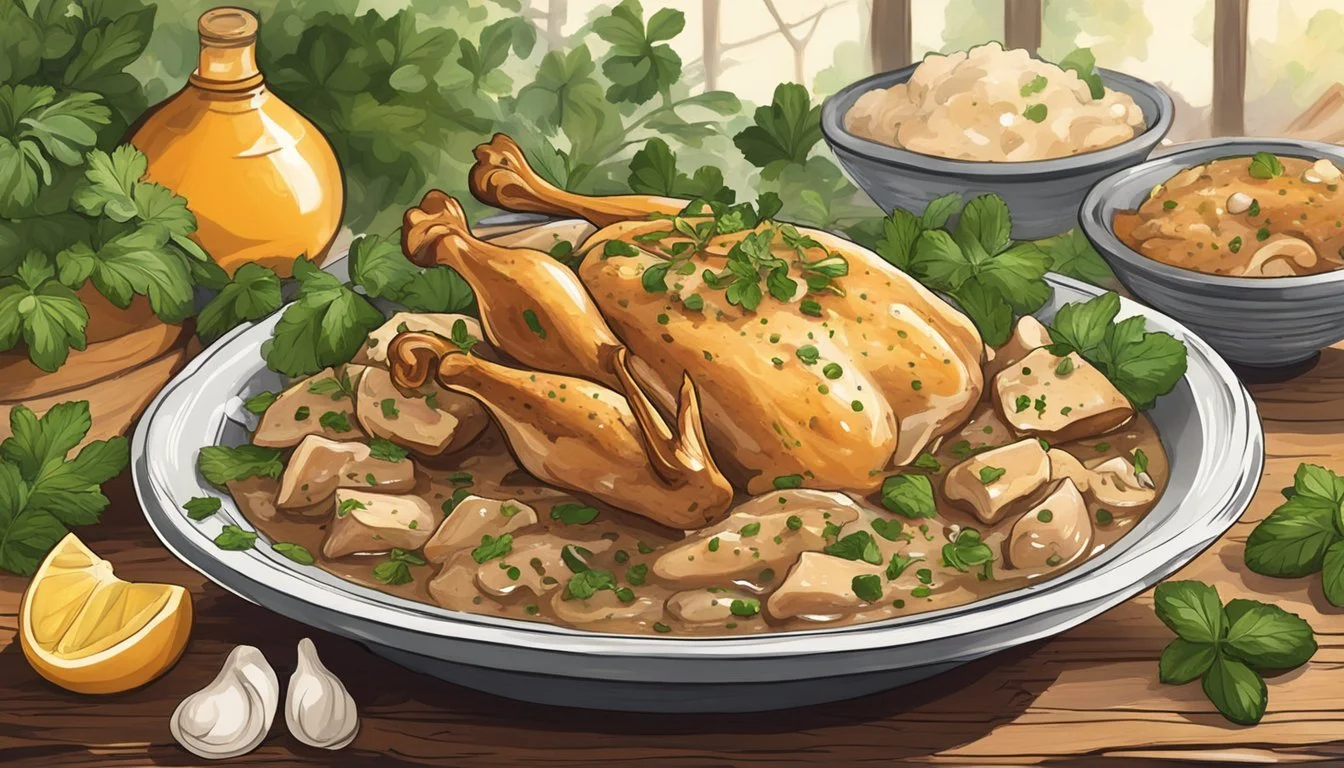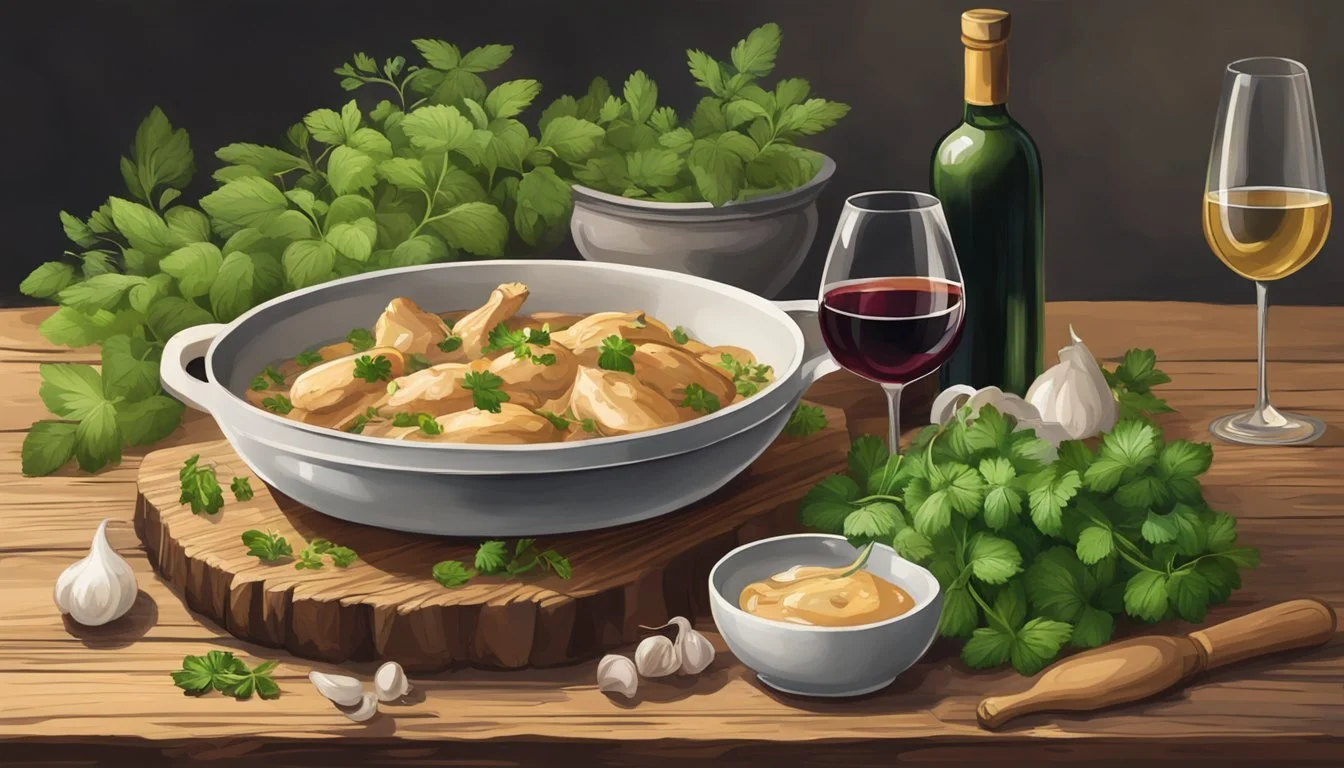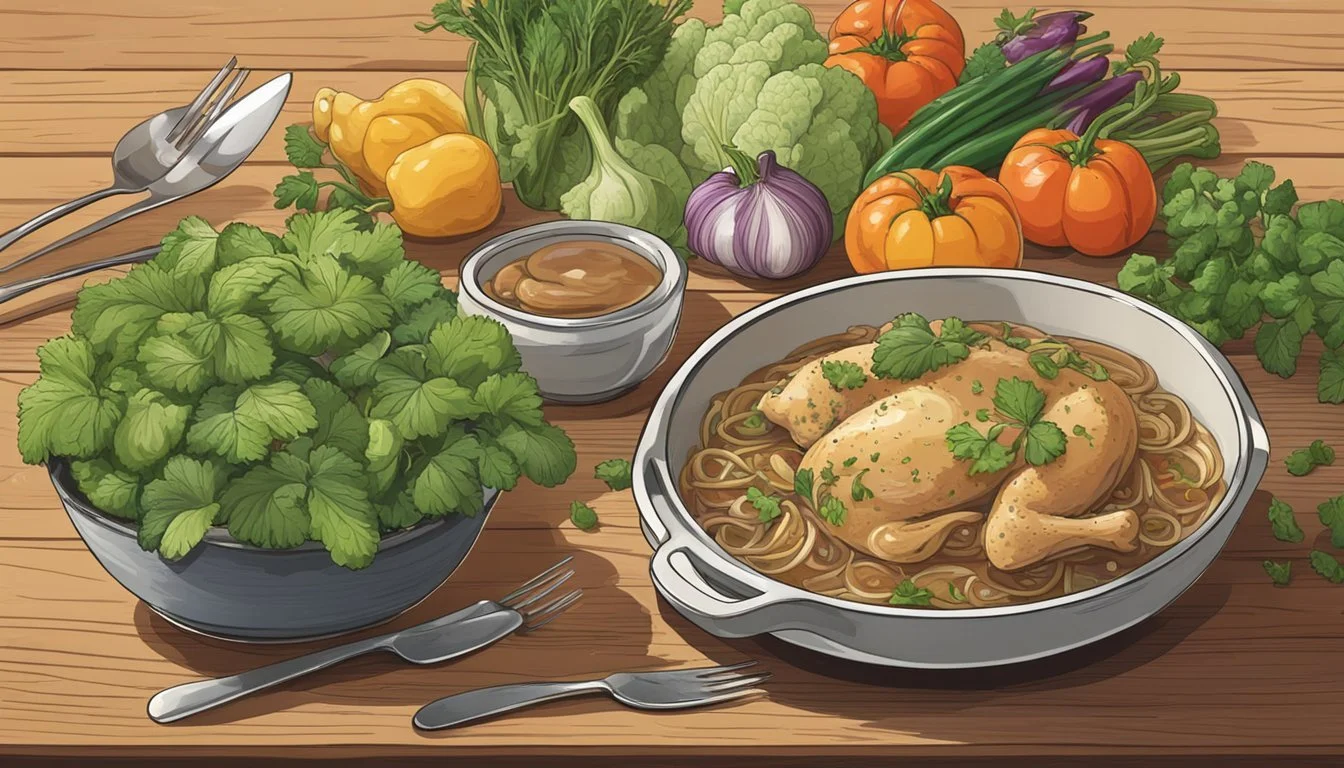How Long Do Chicken Marsala Bowls Last?
Storage Tips and Shelf Life
Chicken Marsala bowls, an Italian-American classic, offer a delectable blend of tender chicken breast and rich Marsala wine sauce. When prepared properly, they can be a comforting and flavorful meal. For those wondering about shelf life, Chicken Marsala bowls can last for up to three to four days in the refrigerator when stored in an airtight container.
The key to maintaining their freshness is to cool the dish completely before refrigeration, ensuring that the sauce and chicken retain their taste and texture. Proper storage is essential to prevent bacterial growth and to keep the flavors intact.
Freezing is another option for extending the lifespan of Chicken Marsala bowls, allowing them to last for up to two months. When ready to enjoy, they can be thawed overnight in the fridge and reheated thoroughly, making them a convenient and delicious meal option for busy days.
Understanding Chicken Marsala
Chicken Marsala is a delightful Italian-American dish known for its rich flavors and versatility. This section will walk you through its origins, popularity, and key components, including common variations.
Origins and Popularity
Chicken Marsala has its roots in Italian-American cuisine, named after the Marsala wine from Sicily, Italy. The dish gained popularity in the United States in the mid-20th century and has since become a staple in many households and restaurants.
It is praised for its simple preparation and rich flavor profile, featuring a harmonious blend of savory and sweet elements. The use of Marsala wine gives it a distinctive taste that sets it apart from other chicken dishes.
Key Components and Variations
The primary ingredients of Chicken Marsala include chicken breasts, Marsala wine, mushrooms, olive oil, and butter. Some recipes may also incorporate shallots, garlic, and fresh herbs like thyme.
To create the dish, chicken breasts are often pounded thin, coated in flour, and then browned in a mixture of butter and olive oil. Marsala wine is added, along with mushrooms, creating a flavorful sauce. Variations may feature cream for a richer sauce or use different types of mushrooms such as button or cremini.
Though the core ingredients remain consistent, the addition of heavy cream or different herbs can offer a gourmet twist. This versatility makes Chicken Marsala adaptable to various tastes and dietary preferences.
Ingredients and Preparation
Making Chicken Marsala involves preparing key ingredients and following precise steps to create a flavorful dish. This guide will walk you through the essential ingredients and detailed cooking instructions.
Essential Ingredients
To prepare Chicken Marsala, you will need:
Chicken Cutlets: Preferably thinly pounded chicken breasts.
All-purpose Flour: Used for dredging the chicken.
Salt and Pepper: Kosher salt and freshly ground black pepper for seasoning.
Butter: Both unsalted and salted may be used.
Olive Oil: For browning the chicken and sautéing the vegetables.
Button Mushrooms: Sliced thinly.
Dry Marsala Wine: Essential for the distinct flavor of the sauce.
Chicken Broth: Enhances the sauce.
Heavy Cream: For a creamy texture (optional).
Fresh Parsley: Chopped, for garnish.
These ingredients ensure rich, layered flavors in your Chicken Marsala.
Step-by-Step Cooking Instructions
Prepare the Chicken: Pound chicken cutlets to 1/4 inch thickness. Season them with salt and pepper. Dredge each piece in all-purpose flour, shaking off excess.
Cook the Chicken: Melt butter with olive oil in a large skillet over medium heat. Add the chicken, cooking until one side is lightly browned (about 4 minutes). Turn and cook the other side until golden and cooked through. Remove and set aside.
Make the Sauce: In the same skillet, add more butter if needed. Sauté the mushrooms until they begin to brown. Pour in Marsala wine and chicken broth. Simmer for 10 minutes until the sauce reduces slightly. For a creamy version, stir in heavy cream.
Combine and Simmer: Return the chicken to the skillet. Let it simmer in the sauce for about 10 minutes, ensuring the chicken is well-coated and the flavors meld together.
Finish and Serve: Garnish with freshly chopped parsley and serve hot.
These steps ensure a delectable Chicken Marsala ready to be enjoyed.
Preserving Chicken Marsala
Proper preservation of Chicken Marsala significantly extends its shelf-life, ensuring that you can enjoy leftovers safely and conveniently. This guide covers how to store and freeze your leftover chicken marsala effectively.
Storage Guidelines
Chicken Marsala can be stored in the fridge within airtight containers. Freshly cooked Chicken Marsala should be cooled to room temperature before refrigeration. Leftovers can last up to 3-4 days in the fridge when properly stored.
For optimal preservation, use glass containers or heavy-duty plastic bags. Avoid keeping it on the fridge door as temperature fluctuations can compromise its quality. Label each container with the date to track its shelf-life.
Airtight conditions help maintain the texture and flavor of the dish, preventing it from absorbing other food odors.
Freezing and Thawing Procedures
To freeze Chicken Marsala, use appropriate containers like freezer-safe bags or containers. Separate the chicken and sauce if possible. This ensures even freezing and reheating. Remove as much air as possible using vacuum sealing methods.
When freezing chicken and sauce together, place them in a single layer on a baking sheet first. Once frozen, transfer to labeled freezer bags.
Thawing should be done in the refrigerator overnight. Never thaw at room temperature to prevent bacterial growth. For faster thawing, place the sealed bag in cold water. Reheat thoroughly in a skillet over medium heat, or in the microwave, ensuring it reaches an internal temperature of 165°F (74°C).
Serving and Pairing Suggestions
Chicken Marsala pairs beautifully with a variety of side dishes and beverages that enhance its rich, savory flavor. From hearty starches to fresh vegetables, the right accompaniments and drinks can elevate your meal.
Accompaniments
Mashed potatoes are a popular choice, offering a creamy counterpoint to the rich Marsala sauce. For pasta lovers, spaghetti or penne pasta drizzled with olive oil and topped with Parmesan works wonderfully.
Rice cooked with a bit of garlic and butter is another excellent option, as is creamy risotto, which absorbs the sauce nicely.
Vegetables like steamed green beans or roasted broccolini provide a crisp, fresh contrast. Polenta can also be a hearty side that complements the dish's flavors.
Wine and Drink Pairings
When serving Chicken Marsala, Marsala wine itself is a logical drink choice, enhancing the dish's earthy tones. For a red wine, a medium-bodied Pinot Noir or Sangiovese pairs well.
White wine enthusiasts might prefer a Chardonnay, which complements the creamy variations of Chicken Marsala.
Non-alcoholic options include a sparkling water with a lemon twist or a light, herbal iced tea. These choices refresh the palate without overpowering the dish.
Tips and Tricks
Mastering Chicken Marsala bowls involves achieving the perfect sear, selecting the right wine, and enhancing flavors with the right ingredients and techniques.
Achieving the Perfect Sear
To achieve a perfect sear on the chicken, start by heating a pan until hot. Dredge the chicken in flour seasoned with salt and pepper to help create a crispy crust.
Cook the chicken in a combination of butter and olive oil to achieve a rich flavor and golden-brown color. Browning the chicken properly will not only enhance its taste but also create browned bits in the pan, which are essential for a flavorful pan sauce.
Work in batches to avoid overcrowding the pan, allowing each piece to sear well on both sides.
Wine Selection
The wine used in Chicken Marsala is crucial for authenticity and flavor. Marsala wine, a fortified Italian wine, is traditional and provides a rich, deep flavor. Dry Marsala is preferable for savory dishes since it balances the sweetness of the caramelized mushrooms and the savory chicken.
If substitutes are necessary, consider using Madeira or a mixture of dry white wine and brandy. These will mimic the depth of Marsala but should be used in correct proportions to maintain flavor balance. Avoid cooking wines with added salt or preservatives, which can alter the dish's taste.
Enhancing Flavor
Enhancing the flavor of Chicken Marsala involves using fresh ingredients and layering flavors. Mushrooms add umami, particularly when they are sautéed until caramelized. Fresh thyme and garlic can elevate the sauce with aromatic notes. A splash of cream can be added to the sauce, giving it a luxurious texture.
Allow the sauce to simmer until it thickens, enabling the flavors to meld. Pan-frying the chicken until golden will ensure the meat stays juicy while absorbing the rich notes of the sauce. For an extra depth of flavor, ensure to scrape up those browned bits left in the pan when adding the wine.
By following these tips, you’ll find that making a delicious Chicken Marsala bowl is not only achievable but can become a highlight of your culinary repertoire.
Health and Nutrition
Chicken Marsala offers a balance of protein and flavorful ingredients, making it both a satisfying and intriguing choice for a meal. This section delves into the caloric content and dietary considerations.
Caloric Content
A typical serving of Chicken Marsala contains about 582 calories per cup. Chicken, being the primary protein source, is complemented by a rich sauce made from Marsala wine and mushrooms. This combination creates a meal that is both flavorful and calorie-dense.
When considering portion sizes, it's important to note that one cup provides a substantial amount of protein—approximately 28-35 grams, depending on the specific recipe. This high protein content is ideal for muscle maintenance and overall health.
For those tracking their caloric intake, it's crucial to account for the additional ingredients like flour, butter, and any sides accompanying the dish. Smaller servings can help manage calorie consumption, making Chicken Marsala a versatile option for both indulgent dinners and measured meals.
Dietary Considerations
Chicken Marsala can fit into various dietary plans with some modifications. Traditional recipes might include flour for dredging and butter for frying, which can be adjusted for lower-calorie or gluten-free diets.
For a healthier twist, substituting coconut aminos for Marsala wine slightly reduces the calorie count while maintaining a rich flavor. Additionally, using skinless, boneless chicken breasts ensures a leaner protein option, essential for low-fat diets.
Storage-wise, Chicken Marsala keeps best when stored in an airtight container and refrigerated. It retains its quality for up to three days. This makes it suitable for meal prep and weeknight meals, offering convenience without compromising nutritional value.
Adapting Chicken Marsala to fit individual dietary needs can make it a lasting and nutritious option in various meal plans.







